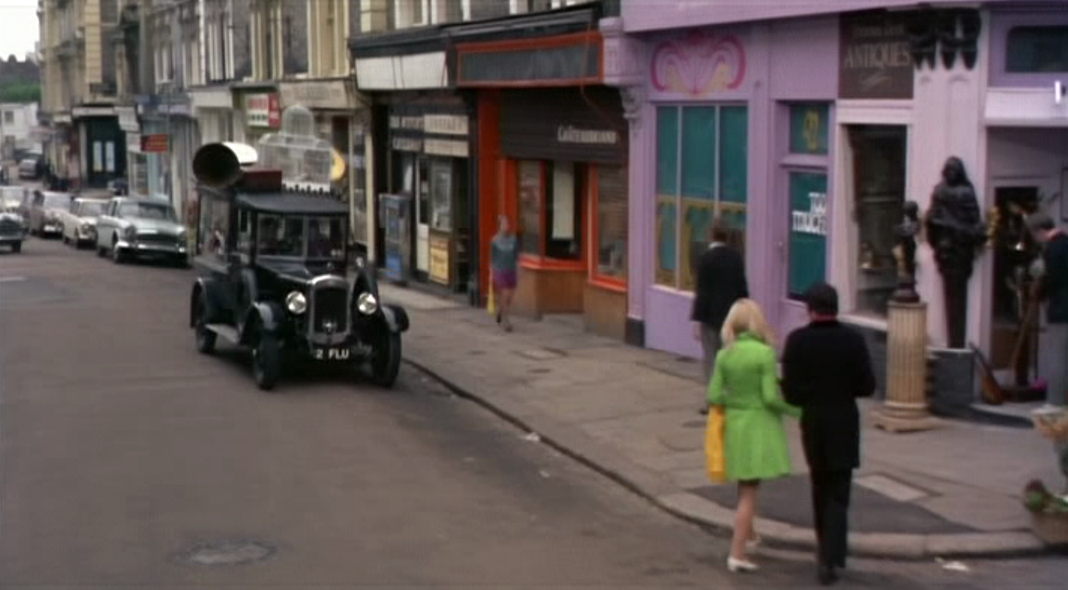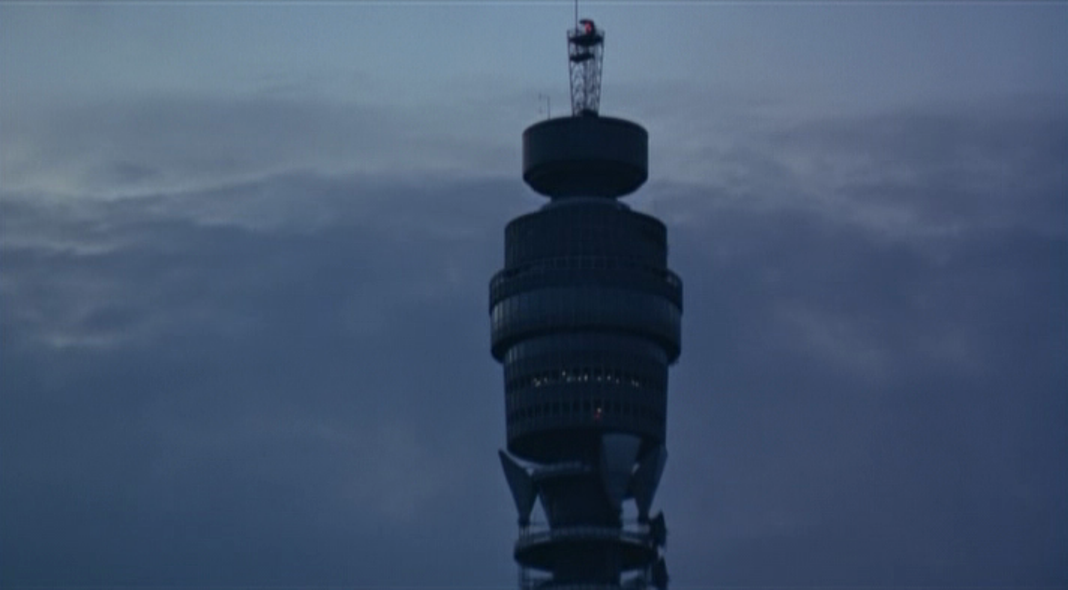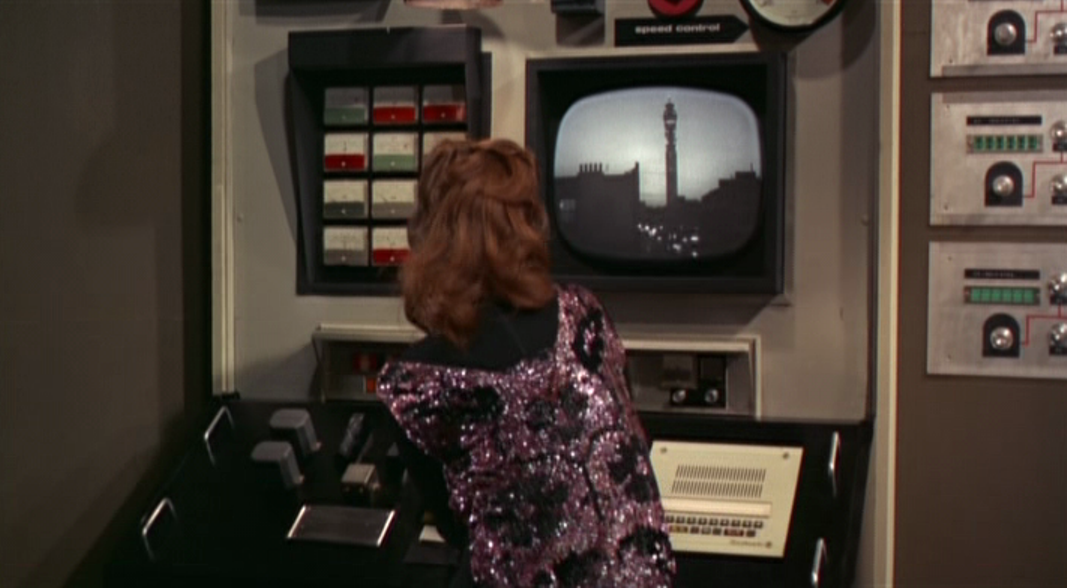The film is not consistent in its location of the invented street in which Yvonne and Brenda go to live when they arrive in London. The fake street sign puts it in Finchley, N.3, but the notice they see in a shop window puts it in N.W.3, Hampstead:
The actual location is the rundown area around Lismore Road, N.W.5 (Kentish Town), a district being demolished (‘smashed’) as the film was being shot. The filmmakers dressed and populated abandoned streets to recreate the cafés, shops and street-market of a working class community already departed:
The anecdote has Yvonne and Brenda returning to their home to find it is being demolished. With all of these streets now gone I cannot tell whether what we are shown as '16 Grudge Street' is actualy Lismore Road or one of the others:
This decaying working-class district is contrasted with the preserved Victoriana of middle-class Belsize Park, less than a mile away. The film shows old clothes being bought from a secondhand shop in Lismore Road and repackaged as retro-chic in the ‘Too Much’ boutique on Belsize Lane, implicating fashion in modernity’s assault on London’s past:
Yvonne’s social progress is expressed in her move from Victorian slum to high-rise ‘turned on studio in Chelsea’ (actually, from the exterior, the newly built Britannic House - now CityPoint):
The climax of the film is a display of technological modernity, a party in the revolving restaurant of the GPO tower (built 1964):
Here swinging London becomes spinning London, as the restaurant reaches top speed and blows London’s fuses, putting out the lights in Piccadilly Circus:
The closing sequence, where Yvonne and Brenda decide to go home, frames old and new London, the evocative vista of Charlotte Street (largely late eighteenth-century), with the GPO Tower in the background:
This post uses material from my essay on 'London Circa 66' in Gail Cunningham and Stephen Barber (eds), London Eyes: Reflections in Text and Image (Oxford: Berghahn, 2007)

















